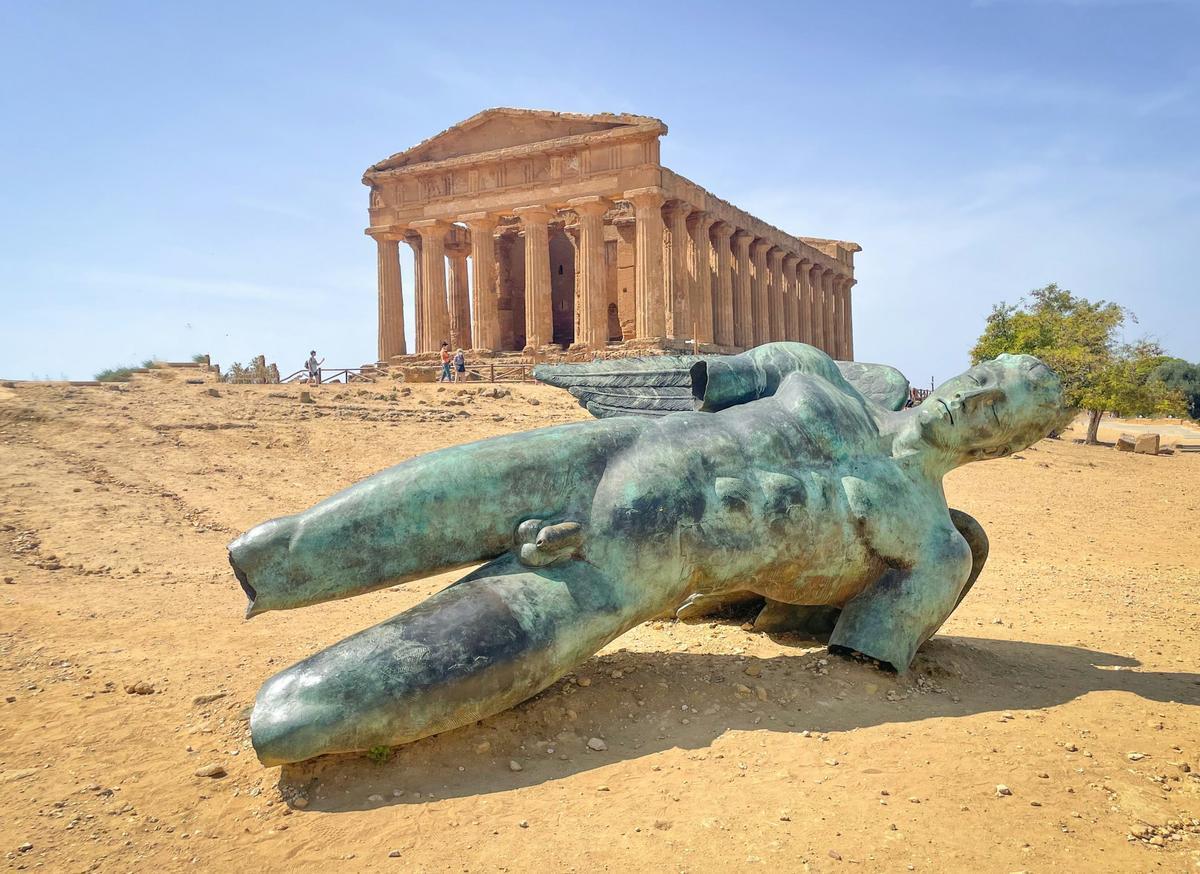
Scandalo Nba, la mafia affascina ancora gli Usa e Trump ne adotta lo stile



10 luglio 2025
It is afternoon and Piazza Monte Grappa in La Martella, an industrial area of Matera, is sunny and almost deserted. There are a few cats strolling placidly on the red tiles of the buildings, just above the barred door of the small library and that of the village theatre, never inaugurated. Breaking the silence is the swish of Angela's broom, who is cleaning the entrance to her bar. She is 56 years old and has lived in La Martella since she was born. She says it is 'a bit of a peculiar place', because around here everything seems to stand still. "We paid for the library,' she says, 'it was built for children and young people but unfortunately it closed down after not even a year because no one went there and nothing was organised, the books all ended up in Matera. The same fate befell the theatre, which did not even open for lack of personnel. Also because, how do you get here?".
Angela explains that the neighbourhood is one of the most isolated in the entire city, with two bus lines and only one run per hour, the last one in the late afternoon. Nothing passes in the evening. Work began in 1986 on the construction of the Matera-La Martella stop, the only railway junction that would connect the city to the nearest station, but the station has never been put into operation. The investments planned in 2019 when Matera was named European Capital of Culture were to no avail: the city is one of the few Italian provincial capitals not connected to the national network. The cultural participation of a community cannot be guaranteed for everyone if it is not accompanied by efficient mobility.
Young people in Palermo: 'The battle against mafias concerns us'
Tourism, often massified, ends up following extractive, hit-and-run logics, limited to a few sites, without translating into real well-being for the territory.
In the northern regions, public transport networks are generally efficient and capillary, while in the south the infrastructure struggles, with less frequent services and limited connections. Journeys are long and exhausting and in many cases people are forced to travel by car or plane, which increases costs.
In Southern Italy there are only 181 kilometres of high-speed rail network (12.3 per cent of the national total), largely concentrated in Campania. There is a significant gap in the electrification of the network: in the South only 58.2 per cent, in the Centre-North 80 per cent. The difference is also significant in the extent of the motorway network, which in the South is 1.87 km per 100 square kilometres, compared to 3.29 in the North and 2.23 in the Centre.
The gap in the transport system has consequences on the attractiveness of the inland areas of the South, where about half of all national archaeological sites are located. Of these, 30.7 per cent are located in Sicily and Sardinia. And this is a pity because in 2023 the Valley of the Temples in Agrigento, the largest archaeological area in Europe and the Mediterranean, surpassed the Egyptian Museum in Turin in the number of visitors, but this result has not produced a positive transformation of the entire area.
On the contrary, in this way tourism, often massified, ends up following an extractive, hit-and-run logic limited to a few sites, without translating into real prosperity for the territory. The difficulty of reaching places of culture also affects the participation rates of citizens living in those areas. According to ISTAT, 26.5 per cent of residents in the Centre-North visited museums or exhibitions compared to 14.8 per cent of residents in the South. The trend does not change when looking at the numbers of entrances to archaeological sites and visits to monuments: 23.6 per cent in the Centre-North and 15 per cent in the South and the Islands. According to the research institute, the public transport network, which excludes those who live in rural and peripheral areas, also determines the gap.
In Southern Italy, new attacks on cooperatives cultivating land confiscated from the mafias
"Think of a person without a car who lives in the suburbs and wants to see a movie in a downtown theater. If the buses don't run, they'll end up giving up."
Roberta Paoletti - Giacomo Brodolini Foundation
ISTAT noted that the people who participate most frequently in entertainment activities have high levels of education, confirming that access to cultural opportunities is strongly influenced by socio-economic factors. The poor urban and regional offer of public transport only exacerbates the problem and citizens with reduced financial means remain more isolated.
"Let's think of a person without a car who lives in the suburbs and would like to see a film in a cinema in the city centre. If the buses don't run he will end up giving up," says Roberta Paoletti, who works for the Giacomo Brodolini Foundation and is an expert in European social policies, gender studies and accessible mobility. One of the problems, according to Paoletti, is that little data exists on mobility in the southern regions. "An intersectional perspective should be introduced, because often those who do not have private transport are women or people with a migration background. Not forgetting the disabled and the elderly'.
In Rome, the Municipality XI, together with the cooperative Magliana Solidale, launched the 'Culturando Insieme 2' project in 2024, which offers residents over 65 guided tours, musical and theatrical events free of charge. "The problem," Paoletti points out, "has been getting these people home in the evening hours, given the low frequency of public transport. A society that is becoming increasingly elderly should seriously address this issue'.
Freedom of the press is increasingly threatened in Italy
Another consequence of the lack of an extensive transport network is that cultural events such as exhibitions, concerts, plays and festivals are mainly organised in the North. 'The projects always involve the same places,' says Rosanna Carrieri, PhD student in Cultural Heritage Sciences and president of the Mi Riconosci? movement, 'the most central and best connected. So many people remain excluded and it is frustrating since culture is also told about as a tool for social redemption'.
As the example of Matera shows, the investiture as the Italian capital of culture serves more to fuel mass tourism than anything else, without any tangible return for the residents who live there all year round. Agrigento, which in 2025 may boast the title, is grappling with serious public (and other) mobility shortages, and for years the connections with Palermo have been lacking. A few 'culture buses' and special shuttles purchased for the event are certainly not enough, buffer solutions that solve nothing.
La tua donazione ci servirà a mantenere il sito accessibile a tutti
Mine antiuomo, piani sanitari segreti e finanziamenti "sostenibili": tutti i trucchi con cui l'Europa ci porta alla guerra
La tua donazione ci servirà a mantenere il sito accessibile a tutti